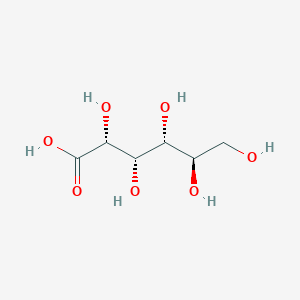Details of Metabolite
| Full List of Protein(s) Regulating This Metabolite | ||||||
|---|---|---|---|---|---|---|
| Oxidoreductases (EC 1) | ||||||
| Glutamate-cysteine ligase modifier (GCLM) | Click to Show/Hide the Full List of Regulating Pair(s): 1 Pair(s) | |||||
| Detailed Information |
Protein Info
 click to show the details of this protein click to show the details of this protein
|
|||||
| Regulating Pair |
Experim Info
 click to show the details of experiment for validating this pair click to show the details of experiment for validating this pair
|
[1] | ||||
| Introduced Variation | Knockout of Gclm | |||||
| Induced Change | Gluconic acid concentration: increase (FC = 2.20) | |||||
| Summary | Introduced Variation
|
|||||
| Disease Status | Metabolic liver disease [ICD-11: 5C90] | |||||
| Details | It is reported that knockout of Gclm leads to the increase of gluconic acid levels compared with control group. | |||||
| Transcription factor (TF) | ||||||
| Forkhead box protein O1 (FOXO1) | Click to Show/Hide the Full List of Regulating Pair(s): 1 Pair(s) | |||||
| Detailed Information |
Protein Info
 click to show the details of this protein click to show the details of this protein
|
|||||
| Regulating Pair |
Experim Info
 click to show the details of experiment for validating this pair click to show the details of experiment for validating this pair
|
[2] | ||||
| Introduced Variation | Overexpression of Foxo1 | |||||
| Induced Change | Gluconic acid concentration: increase (FC = 2.00) | |||||
| Summary | Introduced Variation
|
|||||
| Disease Status | Healthy individual | |||||
| Details | It is reported that overexpression of Foxo1 leads to the increase of gluconic acid levels compared with control group. | |||||
If you find any error in data or bug in web service, please kindly report it to Dr. Zhang and Dr. Mou.

